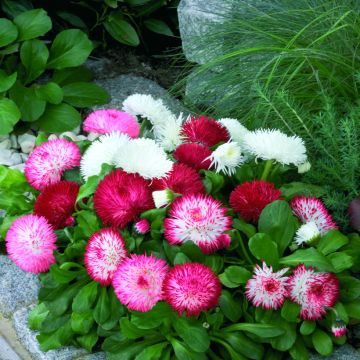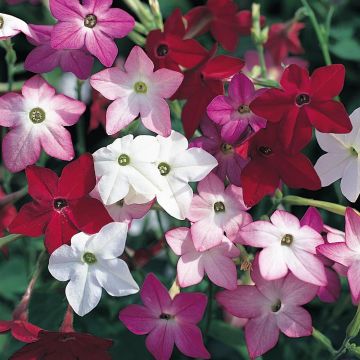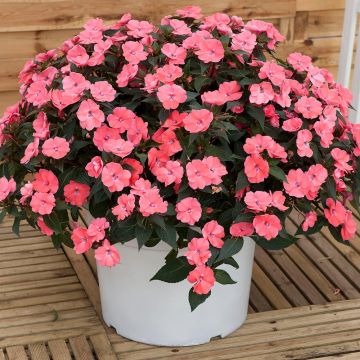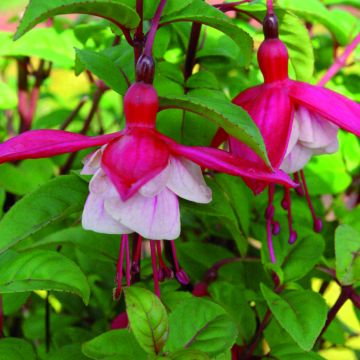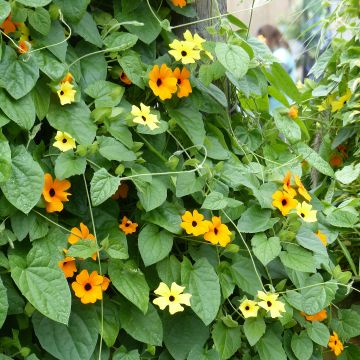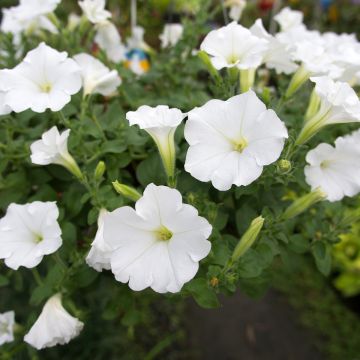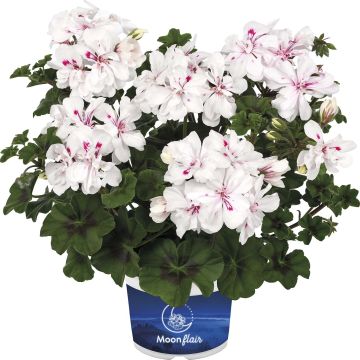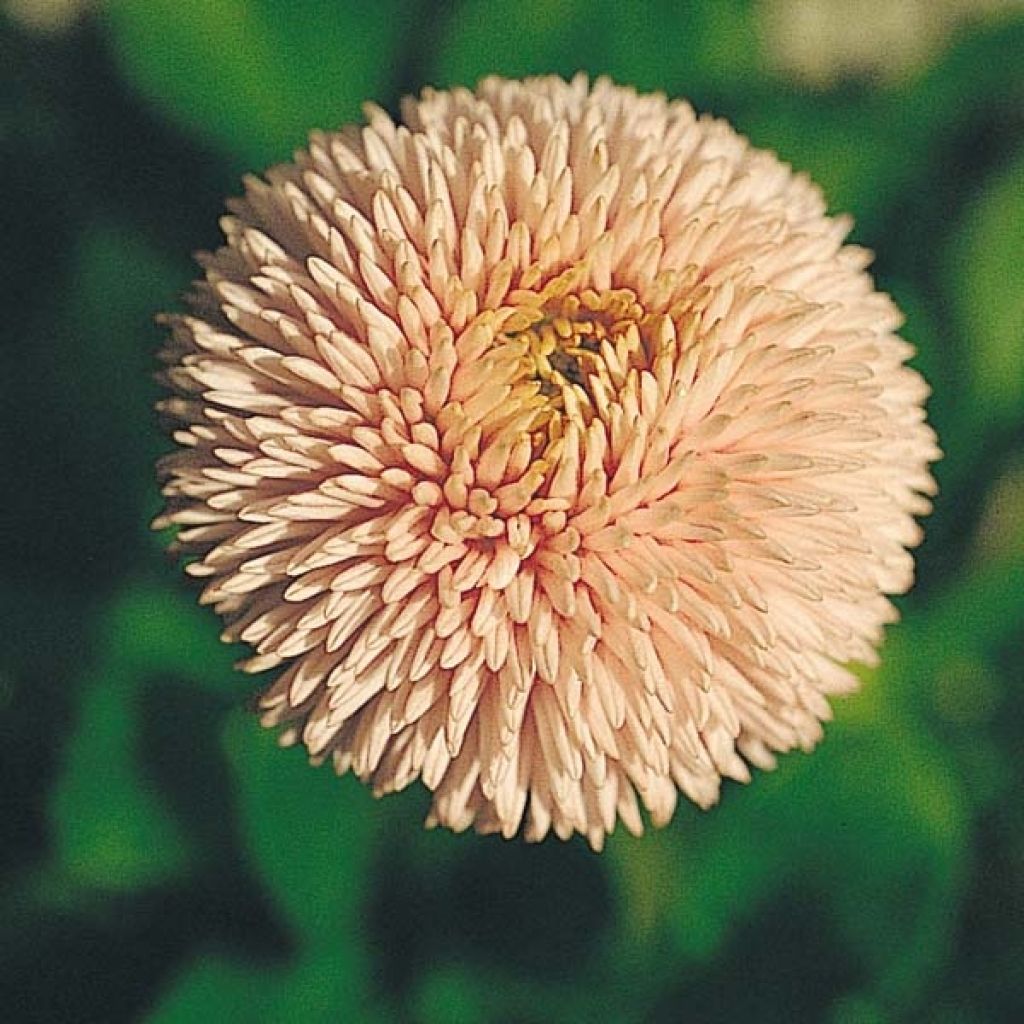

Robella Mini-motte Daisy - Bellis Perennis
Robella Mini-motte Daisy - Bellis Perennis
Bellis perennis Robella
Common Daisy, Lawn Daisy, English Daisy
5 little plants received in a lot of plastic... we'll see how to reduce the ecological footprint on this neck. We'll see how it goes during the flowering, but the plants look healthy :)
Côme, 30/09/2020
This item cannot be shipped to the selected country
Delivery charge from €5.90
Delivery charge from €5.90
More information
Schedule delivery date,
and select date in basket
This plant carries a 6 months recovery warranty
More information
We guarantee the quality of our plants for a full growing cycle, and will replace at our expense any plant that fails to recover under normal climatic and planting conditions.
From €5.90 for pickup delivery and €6.90 for home delivery
Express home delivery from €8.90.
From €5.90 for pickup delivery and €6.90 for home delivery
Express home delivery from €8.90.

Does this plant fit my garden?
Set up your Plantfit profile →
Description
Bellis perennis 'Robella', a variety of daisy that has an incomparable and unique shade among the daisy range. Indeed, the numerous salmon-pink pompoms give the plant a very special appeal, in addition to its resistance to cold and abundant flowering. In balcony troughs or at the front of flowerbeds, the Bellis perennis 'Robella' will creep among the bulbs to herald the spring.
Belonging to the asteraceae family, daisies represent innocence and attachment in the language of flowers. This is undoubtedly what attracts children and makes us want to scatter them throughout the garden to welcome spring with enthusiasm.
The 'Robella' was originally a perennial used as a biennial that preferred cool but well-drained soils. Its height of 15 cm (6 in) allows it to fit in at the edge of flowerbeds, in front of daffodils and tulips, but you can also find a place for it among pansies and forget-me-nots in pots and containers. Its base consists of a rosette of dark green leaves from which several hairy stems emerge, that bear a single head at their top. These pompom-shaped heads are both simple and fun: they resemble small, slightly flattened balls of 3 cm (1.2 in) in diameter made up of multiple very fine, long, very tightly-packed florets. They barely reveal their tiny heart at the beginning of their flowering.
A symbol of the Virgin Mary, Bellis perennis can be translated as 'eternal beauty', these both joyful and discreet spring flowers will accompany you from February to May. Enjoy their tender colours by placing them near the house in pots, accompanied by the pastel shades of pansies. You can also intersperse them in flowerbeds to soften the deeper hues of certain tulips.
Please note: our young plants in mini-plugs are professional products intended for experienced gardeners: upon receipt, transfer them as soon as possible to pots, containers, or directly into flower beds.
Report an error about the product description
Robella Mini-motte Daisy - Bellis Perennis in pictures
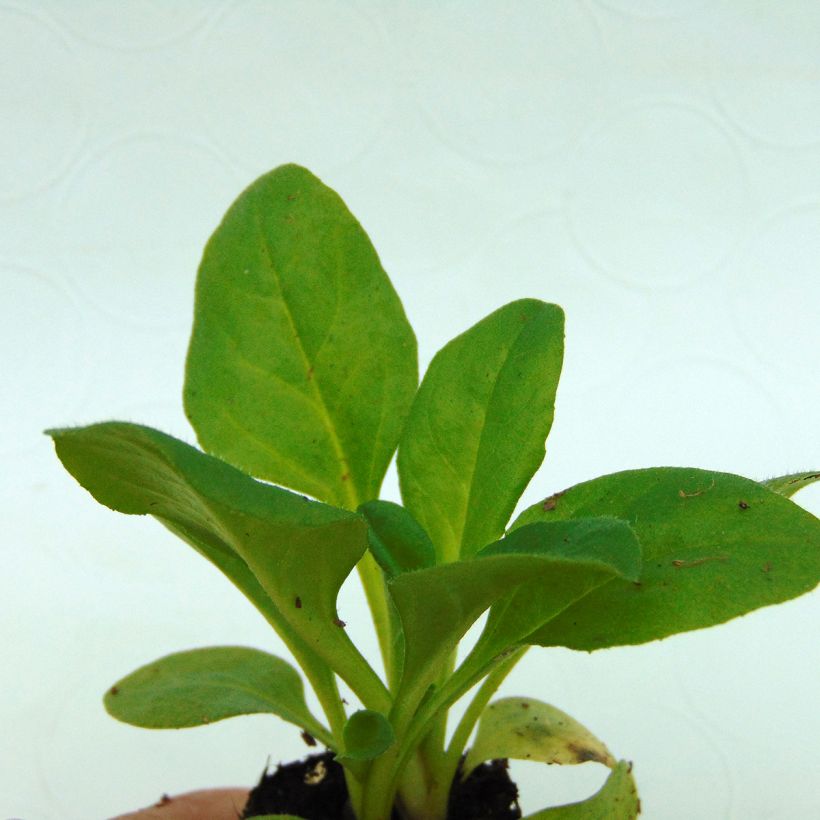

Flowering
Foliage
Plant habit
Botanical data
Bellis
perennis
Robella
Asteraceae
Common Daisy, Lawn Daisy, English Daisy
Cultivar or hybrid
Other Daisies
Planting and care
The clumps of 'Robella' daisies should be transferred directly to pots or planters upon receipt. Monitor watering and regularly add fertilizer (about twice a month). They prefer a sunny or semi-shaded position. If you wish to plant them in the ground, transfer them initially to pots. Also monitor watering, but do not saturate the soil. There is no need to keep them in a greenhouse, they will be satisfied with a sheltered location. In September or even October, you can transfer them directly into the ground. Slugs and snails are fond of their young shoots, so place a ring of ash around the base to protect them. Regular dead-heading will stimulate the growth of new buds.
Planting period
Intended location
Care
-
, onOrder confirmed
Reply from on Promesse de fleurs
Plug plants - Annuals
Haven't found what you were looking for?
Hardiness is the lowest winter temperature a plant can endure without suffering serious damage or even dying. However, hardiness is affected by location (a sheltered area, such as a patio), protection (winter cover) and soil type (hardiness is improved by well-drained soil).

Photo Sharing Terms & Conditions
In order to encourage gardeners to interact and share their experiences, Promesse de fleurs offers various media enabling content to be uploaded onto its Site - in particular via the ‘Photo sharing’ module.
The User agrees to refrain from:
- Posting any content that is illegal, prejudicial, insulting, racist, inciteful to hatred, revisionist, contrary to public decency, that infringes on privacy or on the privacy rights of third parties, in particular the publicity rights of persons and goods, intellectual property rights, or the right to privacy.
- Submitting content on behalf of a third party;
- Impersonate the identity of a third party and/or publish any personal information about a third party;
In general, the User undertakes to refrain from any unethical behaviour.
All Content (in particular text, comments, files, images, photos, videos, creative works, etc.), which may be subject to property or intellectual property rights, image or other private rights, shall remain the property of the User, subject to the limited rights granted by the terms of the licence granted by Promesse de fleurs as stated below. Users are at liberty to publish or not to publish such Content on the Site, notably via the ‘Photo Sharing’ facility, and accept that this Content shall be made public and freely accessible, notably on the Internet.
Users further acknowledge, undertake to have ,and guarantee that they hold all necessary rights and permissions to publish such material on the Site, in particular with regard to the legislation in force pertaining to any privacy, property, intellectual property, image, or contractual rights, or rights of any other nature. By publishing such Content on the Site, Users acknowledge accepting full liability as publishers of the Content within the meaning of the law, and grant Promesse de fleurs, free of charge, an inclusive, worldwide licence for the said Content for the entire duration of its publication, including all reproduction, representation, up/downloading, displaying, performing, transmission, and storage rights.
Users also grant permission for their name to be linked to the Content and accept that this link may not always be made available.
By engaging in posting material, Users consent to their Content becoming automatically accessible on the Internet, in particular on other sites and/or blogs and/or web pages of the Promesse de fleurs site, including in particular social pages and the Promesse de fleurs catalogue.
Users may secure the removal of entrusted content free of charge by issuing a simple request via our contact form.
The flowering period indicated on our website applies to countries and regions located in USDA zone 8 (France, the United Kingdom, Ireland, the Netherlands, etc.)
It will vary according to where you live:
- In zones 9 to 10 (Italy, Spain, Greece, etc.), flowering will occur about 2 to 4 weeks earlier.
- In zones 6 to 7 (Germany, Poland, Slovenia, and lower mountainous regions), flowering will be delayed by 2 to 3 weeks.
- In zone 5 (Central Europe, Scandinavia), blooming will be delayed by 3 to 5 weeks.
In temperate climates, pruning of spring-flowering shrubs (forsythia, spireas, etc.) should be done just after flowering.
Pruning of summer-flowering shrubs (Indian Lilac, Perovskia, etc.) can be done in winter or spring.
In cold regions as well as with frost-sensitive plants, avoid pruning too early when severe frosts may still occur.
The planting period indicated on our website applies to countries and regions located in USDA zone 8 (France, United Kingdom, Ireland, Netherlands).
It will vary according to where you live:
- In Mediterranean zones (Marseille, Madrid, Milan, etc.), autumn and winter are the best planting periods.
- In continental zones (Strasbourg, Munich, Vienna, etc.), delay planting by 2 to 3 weeks in spring and bring it forward by 2 to 4 weeks in autumn.
- In mountainous regions (the Alps, Pyrenees, Carpathians, etc.), it is best to plant in late spring (May-June) or late summer (August-September).
The harvesting period indicated on our website applies to countries and regions in USDA zone 8 (France, England, Ireland, the Netherlands).
In colder areas (Scandinavia, Poland, Austria...) fruit and vegetable harvests are likely to be delayed by 3-4 weeks.
In warmer areas (Italy, Spain, Greece, etc.), harvesting will probably take place earlier, depending on weather conditions.
The sowing periods indicated on our website apply to countries and regions within USDA Zone 8 (France, UK, Ireland, Netherlands).
In colder areas (Scandinavia, Poland, Austria...), delay any outdoor sowing by 3-4 weeks, or sow under glass.
In warmer climes (Italy, Spain, Greece, etc.), bring outdoor sowing forward by a few weeks.

































